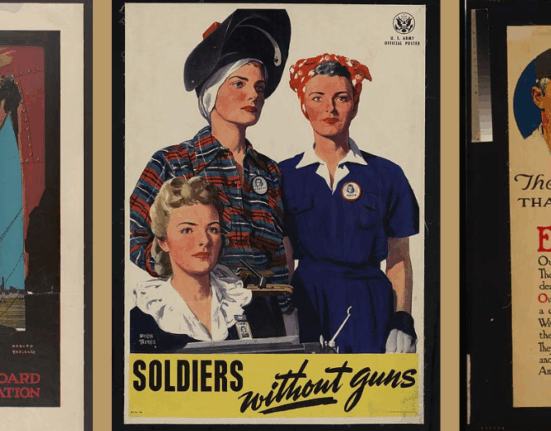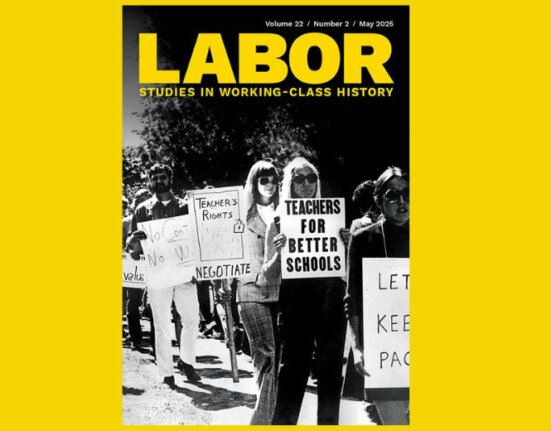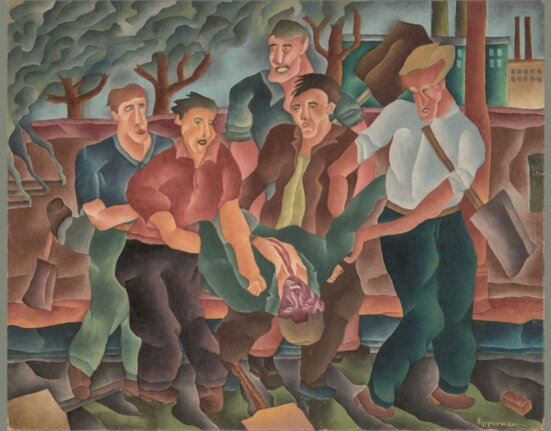In This Issue
Guest Editors’ Introduction
- Susan Levine and Steve Striffler, “From Field to Table in Labor History”
This special issue of Labor challenges historians to think about food and work in ways that not only include the production of food but also explore the connections between the work of food, the place of food in working-class life, and the very nature and trajectory of capitalism itself. We start this discussion by charting the places of labor history within food studies and food studies within labor history, arguing that the two bodies of literature would benefit from more cross-pollination. The rest of the issue traces the relationship between food and work through a series of case studies, including discussions of Native American life during the seventeenth and nineteenth centuries, African American food workers in the early twentieth century, Puerto Rican sugarcane workers under US imperialism, and the politics of fair trade. This volume asks not only how working people have been central to the production of food, but how food—as something that had to be acquired, prepared, and eaten—has been central to working-class life and capitalist transformation?
The Common Verse
- Sara Ries, “American Cheese Family“
Articles
- Sarah Besky and Sandy Brown,”Looking for Work: Placing Labor in Food Studies”
In this article, we propose a critical framework for labor-sensitive food studies. First, we review recent food studies scholarship on agriculture, which leans heavily toward studies of alternative and small-farmer agriculture. We then overview different analytical and theoretical framings dominant in the study of labor and agriculture in the Americas, tracing work from anthropological analyses of peasant and plantation agriculture, to cultural ecologies of smallholders, to American agrarianism, and finally to studies of commodity chains and the labor process. In the review’s penultimate section, we curate scholarship that merges macro-level political economic analysis with detailed narrative and interpretive inquiry into the lives of laborers. We aim for this review to provide groundwork for future intersectional food studies research that is sensitive to the lived experience of waged labor. In our conclusion, we argue for further theoretical and empirical expansion to engage the relationship between labor and food in the twenty-first century.
- Rachel B. Herrmann, “‘Their Filthy Trash’: Taste, Eating, and Work in Mary Rowlandson’s Captivity Narrative”
After colonist Mary Rowlandson was captured by Native Americans during King Philip’s War, food and labor came to represent her fraught position between Native American and colonial worlds. Rowlandson learned to eat previously disgusting foods, but she also tried to convince readers that she preferred non-Native commodities. If she described her tastes as an odd mix between Indian and English, however, she depicted her eating as Indian. Rowlandson’s approach to labor proved similarly motley. Her manufacture of English-style clothing identified her definitively as an Englishwoman, and her inconsistent approach to work meant that she frequently went without food. Rowlandson’s unwillingness to work illuminates different English and Indian attitudes regarding gender. Throughout the war, colonists and Natives toiled to maintain food supplies and targeted foodstuffs as a military strategy. People used food to communicate with each other in ways that ultimately solidified the gap between Native and non-Native in colonial America.
- William Bauer, “Sudsy Sovereignty: Indigenous Workers and the Hops Industry of the Pacific Slope”
In the late nineteenth and early twentieth centuries, Indigenous people in the Pacific Slope—California, Oregon, and Washington—worked in the hops industry. After the Civil War, the cultivation of hops, one of the principal ingredients used to make beer, moved from the Midwest to California, Oregon, and Washington to take advantage of developing urban transportation networks, a long growing season, and good soils. Native workers erected hop poles, trained vines, picked hops, and transported the crop to urban distribution centers. In return for their labor, Native peoples earned cash wages, which they used to compensate for poorly provisioned reservations. In addition to earning cash wages, Indigenous people used hop picking to establish credentials for leaders, participate in social activities banned on reservations, and create kinship bonds. Hops and the food product it made—beer—were not used to undermine American Indian power on the Pacific Slope; American Indians used hops and beer to reclaim what had been lost during the colonization of the Pacific Slope and to articulate their sovereignty.
- April Merleaux, “Sweetness, Power, and Forgotten Food Histories in America’s Empire”
In Sweetness and Power Sidney Mintz noted that, during his field work in Puerto Rico in the late 1940s, he “saw sugar being consumed all around me.” In this article I argue that there was nothing inevitable about what Mintz saw Puerto Rican workers eating. I situate their food habits within the longer history of US colonialism and the immediate context of the New Deal and Second World War. In the 1930s and 1940s, people living in the US island territories became prodigious consumers of sweets as they ate their way through the trade surpluses brought by colonial inequality and wartime limitations. They ate sweets alongside locally produced subsistence crops. Rather than treating food producers and consumers as distinct groups, I suggest that we reconsider working-class food histories in order to foreground the questions of power, empire, and capitalism originally raised by Mintz.
- Vanessa May, “‘Obtaining a Decent Livelihood’: Food Work, Race, and Gender in W. E. B. Du Bois’s The Philadelphia Negro”
In The Philadelphia Negro, published in 1899, W. E. B. Du Bois examined the problem African American workers faced in finding meaningful work. As the following essay and primary documents demonstrate, work with food was central to black labor. Du Bois lauded the success of a small class of black caterers even as he decried the confinement of the vast majority of African Americans to domestic work, which Du Bois viewed as menial labor. But Du Bois’s view of African American food work was grounded in middle-class Progressive understandings of labor, skill, and the gendered value of work. Systemic racism confined African American women to poorly paid and often exploitive domestic work, but cooking in private homes was hardly menial labor. Even in domestic work, which placed its workers on the margins of respectable and remunerative labor, food expertise gave workers relative power.
- Felicia Kornbluh, “Food as a Civil Right: Hunger, Work, and Welfare in the South after the Civil Rights Act”
In this article, Felicia Kornbluh profiles activism and litigation by the civil rights movement that centered directly on food and indirectly on access to income with which to provide food for families. It builds upon the evidence of these efforts to restore to the history of civil rights pivotal battles over political economy, that is, the nexus between government action and the material and nutritional fortunes of citizens. It draws upon a virtually unused set of grassroots-level documents that chronicle civil rights law in action—outside of federal courts and in local communities. Civil rights battles here were welfare rights battles, in the senses of helping individuals get and maintain public aid and of pressing at the limits of the welfare system to raise questions about the distribution of wealth throughout the society.
- Sarah Lyon, “The Hidden Labor of Fair Trade”
In this article, Sarah Lyon explores the impact of fair trade on agricultural laborers within Latin America. She situates fair trade within regional processes of agrarian change, exploring how the movement and certification practices intersect with broader socioeconomic and political forces, paying close attention to fair trade’s insertion into local, regional, and national contexts. The data come from three sources: the author’s own research among small coffee producers in Guatemala and southern Mexico, related studies on contract labor within small producer fair trade value chains, and an exploration of fair trade standards for plantation production. In its current form, fair trade certification provides few identifiable advantages to waged agricultural laborers. It is critical that certifiers begin to explicitly acknowledge and strengthen the legal frameworks already in place to protect agricultural worker rights. Where these are inadequate, fair trade organizations can and should work with other stakeholders to change both norms and regulations.






